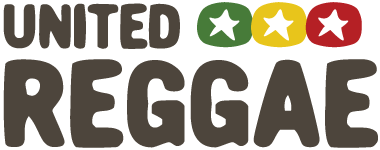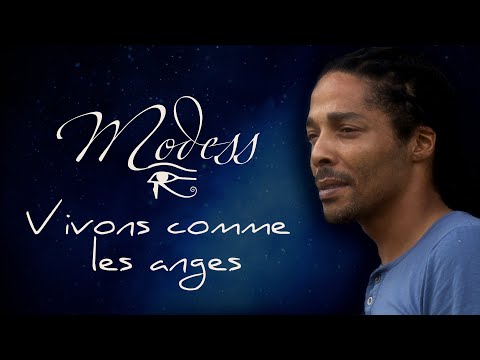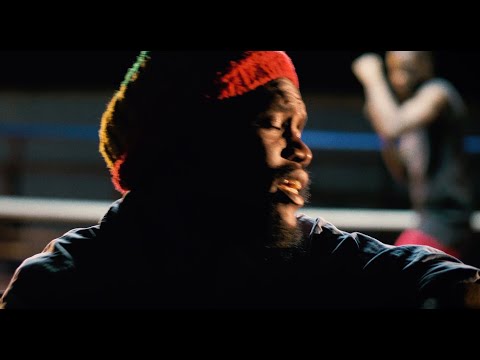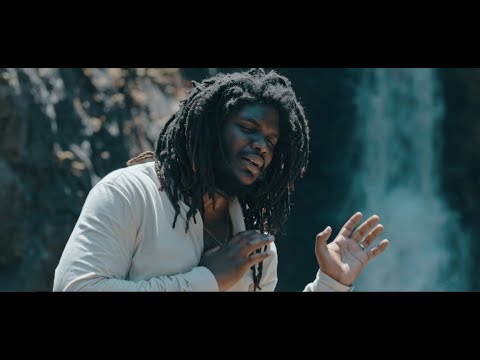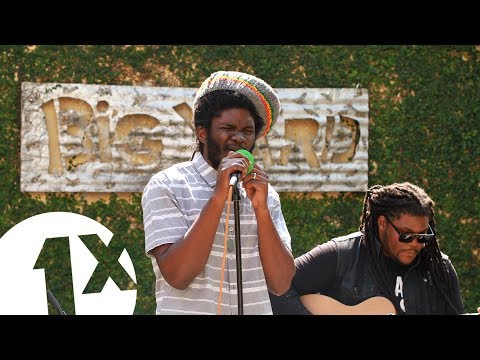Articles about reggae music, reviews, interviews, reports and more...
Interview: Mista Savona (2017)
- Home
- Articles
- Interviews
- Interview: Mista Savona (2017)

Interview: Mista Savona (2017)
"The Cubans say there’s an angel that lives in the studio and blesses what’s recorded there, and I feel there’s a magic"
Sampler
Jake Savona’s Havana Meets Kingston is a very ambitious project that aims to unite the diverse music styles of Jamaican reggae and Cuba son. To achieve this feat, the Melbourne-based music producer brought Jamaican stalwarts such as Sly and Robbie, Bongo Herman and Bo-Pee Bowen to Havana to record with members of the Buena Vista Social Club and the Afro-Cuban All Stars, for a 10-day marathon session of rhythm building at the legendary Egrem studios. He then returned to Jamaica with the master tapes to overdub vocals with the likes of Cornel Campbell, Prince Alla, Leroy Sibbles of the Heptones, and a range of younger artists, including Turbulence, Exile di Brave, and Aza Lineage.
The result is something uniquely captivating, an unprecedented mix and blend of Jamaican and Cuban elements, yet it turns out that Savona’s been crafting all kinds of unusual stuff for most of the new millennium, and the back story goes even deeper still. Over a meal of Eritrean food on a Brixton backstreet, he enlightened me on the ins and outs of the project, and the rollercoaster of his musical career.
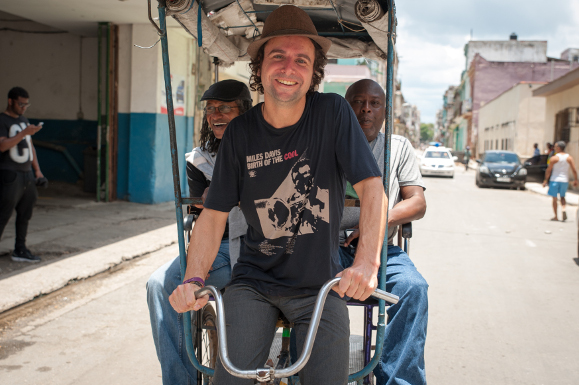
Where were you born and raised? What were your parents doing, and how did you become involved in music?
My mum’s Australian but my dad’s English, and I was born in Northampton, two hours north of London. Mum’s an artist and dad’s an academic, specialised in theatre directing, so both creative. My parents split up when I was super young, and mum brought me back to Australia when I was 6 months old, so I grew up in Melbourne. Dad’s mother’s side of the family is European and his father was Maltese, so I’ve got a good connection with Malta. But I grew up in Melbourne and I’m a piano player; I started learning when I was 6, started off studying classical music, got into jazz and blues in my teenage years, and ended up studying music; I did a Batchelor’s of music at Melbourne University, and I got a scholarship and should have gone to Brazil, but at the time my best friend was living in Scotland, so I went and I did 6 months in Glasgow, then finished the degree and came and stayed in Brixton.
Brixton has always been a centre of reggae culture, since it has such a large Jamaican expatriate community.
Well, I discovered Bob Marley, of course, when I was about 16, and a friend had leant me a cassette tape of Augustus Pablo at the same time, so that was my real introduction to reggae, but it was living in Brixton where I remember I had one cassette tape which was Capleton’s More Fire, and I was just listening to it every day, like day in, day out, and Brixton was where I went to my first sound system shows; glasses were shaking and there was the whole experience, somewhere underground in Brixton. This was like 20 years ago. And I can’t remember if it was Shaka. But, life fortuitously has always pushed me into meeting Jamaican artists. Like I remember I was with a close friend, and it was about 1 am, and everything had closed around here, but we wanted to keep partying, and I just bumped into this Rasta at a bus stop, and he said, “Look, pay for my bus fare and I’ll take you downtown to this little party.” So we went, ended up in the streets, walking through a maze, and there was this tiny room stacked with speakers, and there was one singer on the mic, and I recognised his voice: “Hang on, this is the singer from my sister’s Massive Attack record.” It was Horace Andy! Afterwards I bought him a drink, and the Rasta that had got the bus jumped on the mic as well, and he was wicked too; he was toasting about how he met these Australians.
How and when did you become involved in actually making music?
After Brixton, actually. I went back to Australia and I started my first band with friends and that time I was strictly just a keyboard player, and I started collecting all the old keyboards, like Rhodes, Wurlitzers, Clavinets, Hammond organs, I love the vintage sound. But then my friend in the band, he had a sampler to make beats, and I watched him and realized, hang on, I can do this too. Because dad lived in England I kept coming back to visit him and on a later trip to England I bought my first sampler, which was a Yamaha sampler. So I started off really making hip-hop beats, sampling all my old vinyl records, and I made my first album in 2001, called Bass In Roots, that was just a local release in Australia.
Under what name?
That was under Jake Savona, before it became Mista Savona. I didn’t really know what name to use, so everyone said, “Look, your surname is awesome, use your surname,” so it’s become my producer name, and then I thought, I don’t really want to give it all away as Jake, I’ll make Mister, and then my friend was saying, “Don’t spell it normal, give it a cool spelling.” And in a way now, I just wish I’d used Savona. But it’s Mista Savona.
The band you were playing with, did they ever become successful?
Not much. The band was called Pan, it was a bit of the Melbourne underground for a while, but they morphed into a hip-hop band, and then I formed my own band, getting much more into roots reggae, and the first band that I had on my own, we were called Rootbound System, and we’d do Jackie Mittoo and Augustus Pablo-styled instrumentals, all original; we didn’t do any covers, and again, that was with very good Melbourne musicians. They’d been playing a lot longer than me in those styles, so I learned a lot.
When was that?
In the 2000s. 2001 probably to about 2006 or 7. Then, Baz Turnbull, the guitarist from Rootbound, he’s from a famous Australian blues rock reggae band called Cruel Sea, and I still record with him regularly; his playing is phenomenal, and he’s a big part of the sound of a lot of my old albums. Even on Havana Meets Kingston, a lot of the killer guitar lines are shared between him and Bo-Pee, the Jamaican guitarist that I took to Cuba.
 I realized I had to go to Jamaica to properly educate myself about the music
I realized I had to go to Jamaica to properly educate myself about the music
When did you begin working with Jamaican artists?
In 2004. I’d released 2 albums by then and then I realized I had to go to Jamaica to properly educate myself about the music, and at that time we had no Jamaican population in Australia, and almost no African population, so there was no one to collaborate with. Jesse I, he’s a quite well-known Melbourne reggae radio personality, he’s had the longest-running radio show called Chant Down Babylon, and “More Fire” is the name of his crew; he’s the longest-running sound man in reggae and dancehall in Melbourne, so he came to Jamaica with me on my first trip, 2004, but he’d been several times before. So he showed me around Kingston and then we ended up in Negril, working at Freedom Studios, a studio an American guy called Steve had set up there; we called artists from Kingston, like Anthony B, Determine, and it’s actually a really good album, I really like the album. Production-wise, I mean, I’m at a much higher level now, but the vocals, the mix of songs, it’s an epic album, with 21 tracks. I don’t know how I did it.
You built the rhythms in Melbourne?
Yeah, most of the rhythms, I either recorded with my band in Melbourne or produced on my computer or my sampler. Took them to Jamaica, recorded all the artists there, brought it back to Australia, mixed it and released it as Melbourne Meets Kingston, it was the first-ever album of collaborations between Australian musicians and Jamaican musicians. I just did it on my own, I didn’t have a record label or anything at that point. It was my third album. But, a label called Elephant Tracks, a Sydney hip-hop label, they really liked it so they picked it up and then we got good exposure in Australia on Triple J, which is the main youth radio station; they played it heavily, so that really launched my career. Before then, I was pretty much unknown. And then I did a follow-up to that called Warn The Nation,s mostly working in Kingston at a nice quiet studio called Tell’s. Tell’s an old engineer on Old Hope Road; he knows everyone and he’s the most honest, chilled Jamaican producer studio guy I’ve ever worked with—no hustle, no stress. He’s a lovely guy and he knew everyone that I wanted to work with, like Cornel Campbell and Burru Banton were his friends, and because his studio’s hidden away—he mainly does dub recording—it was just a perfect studio for me. So I voiced there mainly for 2 or 3 trips, then later trips I had to take my own mic and just do a home setup, cause it’s easier and the artists can chill. The last 2 trips I’ve worked out of a friend’s house up in Red Hills, up above Kingston, and artists like to come there because they’ve got a swimming pool, so it’s a much more chilled environment. Basically I’ve been to Jamaica 9 times since 2004, and I do most of the recording over there. I don’t like to do long-distance recording when I’m not in the studio, and I’ve actually tried to do this a few times recently, but I just don’t get the results that you can get when you can guide and direct, you can tell the artist, “I love this, don’t like this,” and also feed them ideas.
 I’ve been to Jamaica 9 times since 2004, and I do most of the recording over there
I’ve been to Jamaica 9 times since 2004, and I do most of the recording over there
With all those projects, you were building the rhythms in Melbourne and bringing them down to voice?
Up until 3 years ago, I made all my rhythms in Australia. Sometimes I’d do a bit of overdubbing, especially with percussionists in Jamaica, because nobody could get the kette sound, the niyabinghi sound in Australia. So basically 2004, 2008, and 2011 were my main recording trips to Jamaica and it was in 2011 that I first met Sizzla. The first time I met him was in one of his yards, and it’s since burnt down, but at the time he had a house there; I met him and I took a CD of my beats, and I just said, “Look, I’m coming from Australia, I’m a massive fan, I also make music, I’d like to work with you,” and he put the CD on and straight away, in the yard, he started smashing the CD player, cause he loved the beats so much. The next 3 hours, he was just freestyling over all my tracks and it was killer, it was one of the best days of my life. Cause I’m such a fan of him and I didn’t know we’d be able to work together. I ended up recording 3 songs in the next couple days, whereas I’d only planned to record one, and from that it because pretty obvious that we could do an album, and he never worked with a white producer across a whole album. I’m the first, and he says, I’m apparently the only one he’s done a full album for. It turned into a record we called Born A King, and I found a US label that was really keen to release it; they’re an electronic label but they’ve been releasing lots of remix albums, like mashups but not with vocals that had been recorded specifically. So they were keen to get to someone like me that could supply them with a capellas that I’d genuinely voiced and had the rights to utilize. So the great thing about this release as well, this album, Born A King, we did about 5 or 6 EPs that went with each single that we put out, and the EPs were 5 to 10 tracks of remixes as well as versions that I’d recorded other Jamaican artists on the rhythms. Some of them are fantastic. I don’t know if you know the Sizzla tune “I’m Living,” you’ve got to check it out, man, it’s one of Sizzla’s best tunes in about 10 years! And then I voiced Cornel and Burru on that rhythm as well as some other really good artists. It was Cornel and Burru in a combination, the first time they ever recorded together, and Prince Alla does a beautiful tune on it, and Pinchers of Pinchers and Pliers. And then there’s a nice instrumental version as well.
What was the label that released it?
They’re called Muti Music, they’re based in San Fran, an electronic label. More dubstep and drum and bass, and other genres that are bass-heavy electronic styles.
What kind of sales figures did any of these albums do for you, roughly?
Maybe if I’m lucky, 1 or 2,000 copies? The Sizzla album, I’m not sure, because it hasn’t paid itself off yet. It’s hard. The traditional model of spending lots of money on recording albums and then selling them and hoping to make the money back doesn’t work anymore. The thing with the Sizzla album, I went twice to Jamaica because I wanted to make this album really, really, really good, and some of the reviews have said it’s one of Sizzla’s best albums in a decade, and I’m really, really happy with this album; we voiced most of it on that first trip, and he did a couple tracks long distance, then I went back to his yard and spent a week with him, fine-tuning everything, and Sizzla was really cooperative. Songs where I wanted to scrap a verse and add a whole new verse, he did it, and he’d add harmonies; I didn’t want girls doing harmonies, so I got him to do all his own harmonies and everything, and the production, I’m really happy with that record. It’s tasteful, a mix of hip-hop and dancehall and roots reggae. There’s a beautiful combination with Alton Ellis, one of the last songs Alton ever recorded, that I recorded with him in London.
Alton and Sizzla on the same track?
Yeah, it’s stunning! It’s called “Give Jah Praise.”
I have another question about the Melbourne Meets Kingston album, before we move on to the new Havana Meets Kingston project. I took a glance at the credits online, and aside from Anthony B, Determine and Big Youth, anybody else that I could see, it looked like they must be based in Melbourne?
No, they were Jamaican artists, but more based in Negril, and they were not big names. Stevie Culture’s an artist who I really rate, but I’ve struggled to link with him again. He’s now in the States somewhere, at the time he was living in Negril and he does some amazing tracks on that record. And then it was more crew from Negril and not big-name artists, but they’re good artists.
 Melbourne Meets Kingston is a great album, but I’d say Born A King with Sizzla is an album I’m really proud of
Melbourne Meets Kingston is a great album, but I’d say Born A King with Sizzla is an album I’m really proud of
So you didn’t bring the rhythm tracks back to Australia voice with Melbourne artists?
No. There is some backing vocals from Melbourne singers and the thing about Melbourne Meets Kingston is, there’s 21 tracks, but maybe its 14 different rhythms, so the other 7 songs are versions, and I did a recut of Lee Perry’s “Words” rhythm, cause I play melodica as well, it’s one of my instruments. So there’s a version with Big Youth doing vocals, with a really good Melbourne singer doing the Sangie Davis part, which since I’ve recorded Sangie Davis voicing, but I haven’t released it yet. And then there’s this killer trombone version on there, instrumental, and then Determine does one of the best tunes I’ve ever heard him do.
And all of this led you to make Havana Meets Kingston?
This was all my training, basically. Melbourne Meets Kingston is a great album, but I’d say Born A King with Sizzla is an album I’m really proud of.
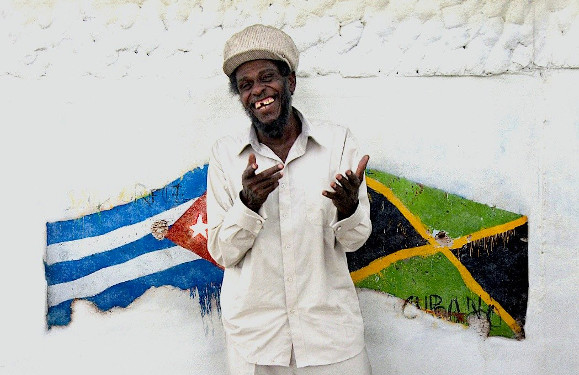
Talk me through the whole genesis of the project.
Australia is very far from Jamaica, right? It’s so far to get to, and it’s often a very expensive way to go, but in 2011, a good friend of mine had come back from Cuba and at the time I didn’t realize how close Cuba was to Jamaica; it’s only 90 miles from Santiago de Cuba to Kingston. So, suddenly, I thought, “Fuck, there’s no excuse,” and when I was in San Francisco for a conference and I was heading to Jamaica, I promised myself, “OK, this trip, I’m gonna go to Cuba even if it’s just a week,” and Cayman Airlines does a flight from Kingston to Havana via Cayman Islands, it was about $500 US, so I got the flight. I had a good Australian friend who’d met some Cubans from Santiago in Havana, she hooked me up with one of them, and when they found out that I’d come from Jamaica and I’m a DJ and I understand the music, they actually invited me to Santiago to play. So then back to Havana, I was sitting in a little coffeehouse, and they were playing this amazing rumba percussion on the stereo, and straight away I could see how this and the Jamaican rhythms could just fit together. I thought, “Wow, I wonder if someone’s done something like this before,” and I thought for sure they must have, because in Miami there’s so many Jamaicans and Cubans together in the same place. But in Cuba, there’s no internet, so I actually didn’t do the research until I got back to Australia, and I realized, there’s nothing, and I spoke to a few people, going, “It’s crazy,” thinking it would be awesome to fly a Jamaican band into Cuba and a few of my friends loved it and they kept on my case, cause I kind of forgot about it for a while. But in November 2014, just looking online, I stumbled across an Australia Council funding grant, called International Collaborations, and the application was due in a week, so I quickly called my friend who’s amazing with maths and I said, “Please, help me with the budget” and I put together a really great looking grant application. I’d recorded with Sly at Tuff Gong on a trip to Jamaica around 2013, and Bongo Herman’s an old friend; every trip I go to Jamaica, he finds me and we end up doing stuff, so Bongo was one of the ones to hassle me about it as well. So I went for the grant and I got it, otherwise there’s no way I could have personally financed this project. That basically funded that we could fly in Sly and Robbie, Bongo, Bo-Pee and a few other Jamaicans into Cuba, and we financed the studio time and all the Cuban session musicians, which was almost 30 different musicians that we worked with in Cuba.
 Kingston is only 90 miles from Santiago de Cuba
Kingston is only 90 miles from Santiago de Cuba
Who else were you planning bring to Havana?
With this project, I didn’t just want to focus on the superstar musicians, although of course that was an important part of it, because I’d never worked with musicians of this calibre before—they’re some of the best in the world. So we wanted to bring a couple of younger Jamaicans as well. We brought Sly and Robbie, and Robbie brought his partner and Sly wanted to bring his engineer and assistant, a young guy called Garfield; then I brought Bongo Herman and Bo-Pee, the guitarist who’s now touring with Inna De Yard, and then I brought a young Jamaican singer and percussionist I’d met through the Dub School network and Jah Ova Evil crew called Bugzy, and then I was gonna bring Joan Webley who runs an organisation in Kingston called Nanook, she’s an old friend of mine that I met in Australia, but in the end she had to pull out, she had a whole lot of her own projects that were getting really big at the time. And then when we got the grant and a good friend of mine in Melbourne, she really wanted to come; she goes, “Do you mind if we do a Kickstarter campaign so that I can bring a really good filmmaker, we can come and film.” I was, like, “Awesome!” So we did a Kickstarter, we just scraped through, we got it, with some generous support from friends, so that paid for the filmmakers, so it was quite a big crew.
How did the project evolve, and what kind of barriers did you face?
In Cuba, we focussed on the rhythms and we focussed on the Cuban vocals and then I did most of the Jamaican vocals back in Yard, because obviously I couldn’t afford to fly in all the artists that I wanted. And when I got the funding, it was a mystery with the visas. Like, I got in touch with the Cuban Embassy, and at the Arts Organisation, the people warned me, “Look, if you alert them to everything you’re doing, they’re just gonna charge you every step of the way and make it really hard,” so we actually went a bit under the radar; well, I thought we went under the radar, and a year later I found out that the Cuban government knew exactly what I was doing, but they didn’t seem to mind and they certainly didn’t interfere with it. And I was very lucky because in Australia, 20 years ago I’d toured with an aboriginal singer, and the percussionist that came with him was extraordinary: he’s Chilean, living in Melbourne, his name’s Javier Frietes, and he goes to Cuba all the time, because he’s a high priest of Santeria and he’s very respected; he’s one of the best percussionists in Australia, so when I got the grant, I called him up and he was like, “Look, this is the best thing ever,” and his elder, his teacher, who’s one of the most respected priests in Havana apparently, a man called Jacinto, Jacinto’s the one that opened all the doors. Like Egrem, which is where Buena Vista was recorded, wasn’t available for me, and Jacinto made it available. Some of the musicians weren’t sure about it, and Jacinto made them fall in love with the project. So through Javier and Jacinto, I got some of the best musicians in Cuba involved, in the best studio, the studio I’d dreamed of working in. I first heard the Buena Vista Social Club album when I was 18 or 19, and like everyone, fell in love with it, but I’d forgotten a bit about it and forgotten about Cuban music until my 30s, when I was dating a Japanese girl and she’s a salsa teacher, and suddenly I’m listening to heaps of Cuban music again. So all these things just fortuitously happened, that were the seed of the project.
 We brought Sly and Robbie, Bongo Herman and Bo-Pee, and the young Jamaican singer and percussionist called Bugzy
We brought Sly and Robbie, Bongo Herman and Bo-Pee, and the young Jamaican singer and percussionist called Bugzy
So, essentially, both the Jamaican musicians and the Cubans recorded everything there?
In that 10 days at Egrem, we basically recorded at least 2 albums, maybe closer to 3 albums’ worth of rhythms, and then when we could, I’d get the Cuban vocalists in and we’d have them voice. And it was amazing. Egrem’s this one big room, with 3 booths at the back, so in one of the booths I had Sly, next to him was Bongo, and those 2, like when you take Bongo’s percussion out, it’s not complete, and you can hear actually in the intro to “El Cuato,” you can hear Bongo and Sly talking, discussing what rhythms they’re gonna do to make it lock. And then the third room was, either we have the double bass, cause for the Cuban songs, we weren’t using Robbie, we were using double bass, and so we’d get the separation, so the percussion on my record sounds like straight from Buena Vista.
How did you choose which Cuban musicians to use?
Well, you know what studios are like; it’s the same in Jamaica, more people were coming in every day, “You’ve got to have my friend,” or “You’ve got to have this legend.” And again, more synchronicities: I was looking for a certain kind of song but I didn’t know what we wanted to do, and then, suddenly in another room I could hear one of the Cuban singers singing something that sounded amazing, so I just grabbed him, “This is exactly what we’re looking for,” and he wasn’t even in the room at the time!
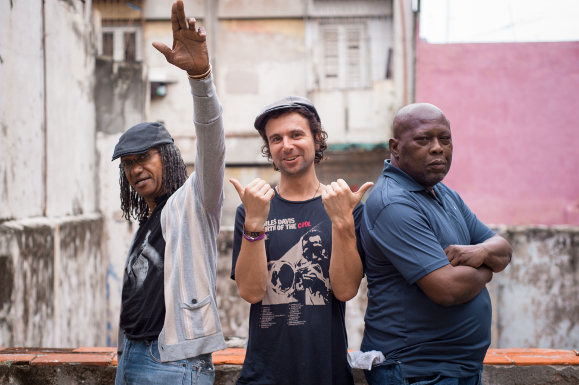
And the toasting you recorded with artists like Determine or Exile Di Brave, did you go back and record that later in Jamaica?
I took some a capella’s that I’d recorded previously, but mostly I voiced those later in Jamaica.
So it was a long process?
This was 2 years ago, and I only just finished mixing the album a couple months ago!
So you had gone to Jamaica directly after Cuba, and then you recorded some of the younger, upcoming artists?
Yeah, I wanted to represent lesser-known artists, and I worked a lot with the Jah Ova Evil crew and the Dub School crew, as well as these legends like Cornel and Prince Alla. And Leroy Sibbles came and did a couple sessions for me, cause even though he was disappointed about not being able to come to Cuba, he still wanted to be involved, and his vocal outro on the “100 Pound of Collie” is so good, and there’s other songs he recorded that will come out on the next album. So it’s going to be a 2, or probably 3 album project, and a film is coming out with the second album next year.
 In Cuba, we focussed on the rhythms and on the Cuban vocals and then I did most of the Jamaican vocals back in Yard
In Cuba, we focussed on the rhythms and on the Cuban vocals and then I did most of the Jamaican vocals back in Yard
What other memories do you have of making the album?
We went to Cuba, and pretty much went straight to the studio the second day, and when we began the recordings it all went very smoothly, and it was just magic in the studio; the Cubans say there’s an angel that lives in the studio and blesses what’s recorded there, and I feel there’s a magic. I believe it, there’s something in that room. So it was an amazing 10 days. And the cliché is that Jamaicans are so chilled and relaxed, and they want to smoke all the time, but it was actually the Cubans that were drinking all the rum and getting messy. And in the middle of the trip, Robbie said, “Look, can we kick the Cubans out for like, 1 day?” And that day we put down 8 rhythms, just with Sly and Robbie and Bongo and Bo-Pee, so it was actually really nice in the middle to have a day focussed, just with the Jamaicans. But it was very magical. I was expecting 1 or 2 songs a day, thinking we’d do a 15-20 track album in 10 days, and we did more like 40 tracks! And Eric, the engineer, his wife’s a fantastic manager, involved in music in Australia, and she came to Cuba at the end of the trip to have their honeymoon, and when she heard the music, she said, “Let me manage this project,” so she got the Australian Broadcasting Corporation, their music department is releasing the album in Australia and New Zealand, then I’ve got a French manager through my connections with Sun Ska Festival in France, one of the guys used to work for Soul Beats, the label that’s associated with them, Vianney came on board, so we’ve signed with Baco for France and VP for the rest of the world. So, 3 different labels, all looking after different parts of the world.
I noticed that some of the songs seemed much more Cuban in focus and some were much more Jamaican. What that intentional or just the way things worked out?
As someone that’s been working with Jamaican artists for a long time, and has a deep love and knowledge of Jamaican music, obviously that’s my strength, and this is my first time recording and mixing Cuban music. So a song like “Carnival” is a good example of what I was trying to do, where the chorus has this really uplifting Cuban feel and moments of Cuban montunos and the flavours, but at the end of the day it’s about that incredible groove, you know? Then we’ve got tracks that are far more Cuban: we’ve done a killer version of “Candela” and “El Cuato” which are far more Cuban, but again, have guest verses from the Jamaican artists that give it a bit of a dancehall vibe. When I deejay, I love playing all styles: I play reggae, I play dancehall, I play hip-hop, I’ll play Afro-house, I’ll play bass electronic, I’ll play drum and bass at times as well; I like to move quickly and I like to keep it interesting. There’s so much great music out there, for me the magic of this album is to have the Spanish-speaking and the Jamaican patois together, and the mix of the musical styles. I’d Havana Meets Kingston is probably 60-40 in terms of Jamaican to Cuban ratio of sounds, but the next album will be 50-50 and then maybe a bit more in the Cuban side of things. But for the first record, I just wanted to go, “Here it is: rockers, heavy feels, but with something new and fresh.” And mix-wise, I really wanted to keep it to an organic roots sound, not overproduced or over processed; we mixed everything with tape and through SSL and Neave desks, cause I really wanted to capture this authentic sound, and having spent all this money, getting everyone over there, I didn’t want to just…production is important to me, so I wanted to have this roots aesthetic and yet take it somewhere new. And I think I’ve succeeded. I really feel like the album does that. It was just an amazing 10 days, man. Looking back on it, it was kind of a miracle. The level of musicianship, and the artists coming through, I didn’t know who they were, and when I researched later, it was like, “Oh my God, it’s Felix Boloy of the Afro-Cuban All Stars, and Beatrice Marquez, who I found out later is considered one of the 3 all-time great Cuban female singers. It was just a very magical time, but it’s taken quite a while to finish and release the album for a few reasons, one is getting the labels on side and that whole process. When the videos went viral at the beginning of this year, that was the sign for me that it’s worth waiting for the proper deals, and that’s all falling into place. And also I felt a great responsibility to do a really good job with this album and not fuck it up. Like actually mix it and get the right mix of ingredients, because a lot of the tracks were basically with a 20-piece band, and you can’t have that many musicians; it just gets too busy, so the possibilities of how to remix or mix, or what to feature and what not to feature, it was a big process. I basically spent about a year and a half mixing, when I thought I could do it in 6 months. I really modelled the mixing on the old sounds and people like Scratch; we even got the Mutron phasers for some of the songs and space echoes. I really wanted to get this old sound, but still be sound fresh and new for clubs and for the festivals and everything, but if you listen to the record you really hear this mix of the Buena Vista sound mixed with this roots reggae approach to the mix. And we had the room mics, they’re very alive and a big feature of this album, because I want people to hear the sound of the room. Personally, pop music and even modern reggae now, it’s so overproduced, and I can’t handle it. But this album, you will not have to worry about that.
 In that 10 days at Egrem, we basically recorded at least 2 albums, maybe closer to 3 albums’ worth of rhythms
In that 10 days at Egrem, we basically recorded at least 2 albums, maybe closer to 3 albums’ worth of rhythms
So Havana Meets Kingston is going to be the first of a series of albums?
Yeah. What the next one’s called, I’m not sure yet. The film is possibly going to be called 90 Miles Apart; whether I call the second album that as well, I’m not sure.
Will there be live performances of this project?
Absolutely. The Jamaican Tourism Board’s actually approached us about launching it in Kingston, and as of early next year, we want to do the full band; we’ve got a booking agency in France and it’s gonna be Sly and Robbie, Bo Pee, Bongo and quite a lot of the Cuban musicians we worked with, including hopefully Babarito and Orlando from Buena Vista, and 3 or 4 vocalists, and we want to tour the world with that next year. And the live act, I swear, it will be one of the best bands in the world, man. These Cubans, with Sly and Robbie holding it down, and everyone else going crazy! That’ll be the vibe.
Read more about this topic
Comments actually desactivated due to too much spams
Browse by categories
Recommended Articles
Latest articles
Recently addedView all
© 2007-2026 United Reggae. All Rights Reserved. Reproduction in whole or in part is prohibited. Read about copyright
Terms of use | About us | Contact us | Authors | Newsletter | A-Z
